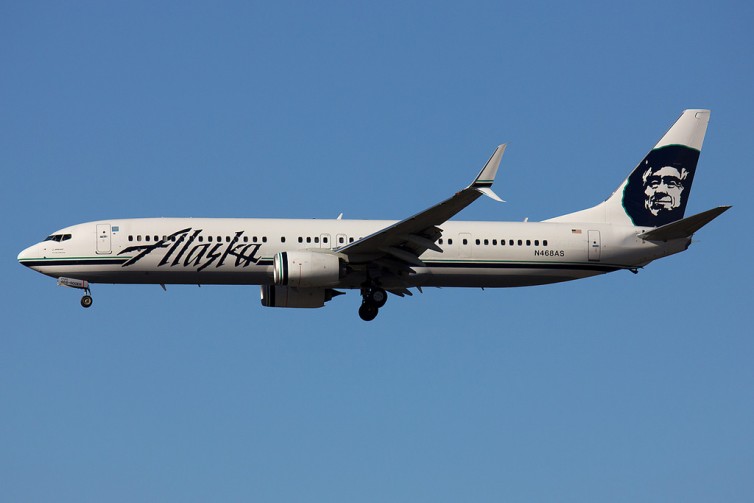
An Alaska Airlines Boeing 737-900ER landing at LAX – Photo: Carlos Ever | Flickr CC
On Monday, an Alaska Airlines flight from Newark bound for Seattle had to divert to Buffalo for an emergency landing because of smoke reported in the passenger cabin.
According to a statement from the airline, a malfunctioning credit card reader on board Flight 17, operated by a Boeing 737-900ER, started producing the smoke. A flight attendant took it to the back galley, placed the the device into a trash bin to contain it, and used a fire extinguisher to suppress any possible fire, while the flight crew declared an emergency and prepared to divert. There were no flames from the device, and the plane landed without incident at 8:15am EDT with 181 passengers and six crew members on board.
No injuries or fire damage to the aircraft were reported, though fire and emergency vehicles met the aircraft on the runway as a precaution, due to landing overweight from to a full cabin and fuel tanks for the transcontinental flight. A passenger on board the flight posted details of the diversion as it was happening on Flyertalk, an online forum for the frequent flyer community. User “autumnmist” reported that the “[f]light attendants and pilot handled it well,” and also lamented, “[s]o much for getting a solid nap in before landing in Seattle!”
We reached out to autumnmist, who asked to be identified as “J,” for more information. J, seated in Row 13, stated that the passengers were calm, mostly dozing because of the early hour and some not realizing that anything had happened until the descent started. The cabin crew announced that all passengers should be seated and prepared for landing. The captain came onto the PA system to announce that there was a small incident and that they would be landing at Buffalo out of an abundance of caution, touching down in about 17-18 minutes.

Air Force One arriving at King County International Airport on October 9, 2015 -Photo: Francis Zera | Airline Reporter
There are few aircraft as readily identifiable as the 747-200B/VC-25 known as Air Force One (even though there are actually two of them; more on that in a bit). The aircraft is designed to ferry the President of the United States, other elected and government officials, VIPs, and the White House press corps, anywhere in the world and in high style.
Any U.S. Air Force aircraft in which the president is flying carries the call sign Air Force One. But it’s the two VC-25s that are the flagship aircraft most of the world will immediately recognize as being the primary mode of transport for the current US president.
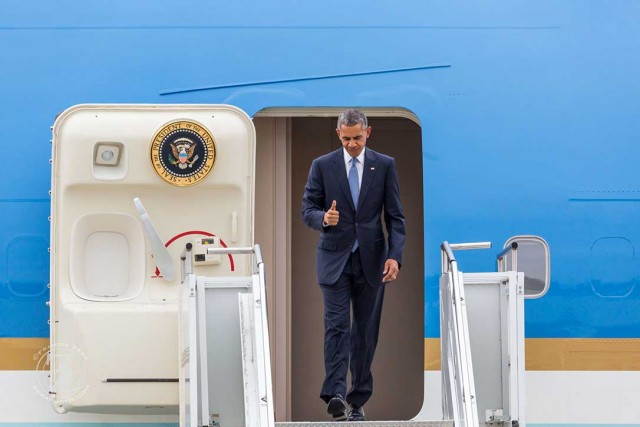
President Obama arriving in Seattle via Air Force One – Photo: Francis Zera | Airline Reporter
Suffice it to say that, wherever Air Force One shows up, interest (and security) are high. For the recent Seattle visit, on October 9th, local AvGeek interest was strong, and at least one of the sanctioned airport viewing areas was kept open for public viewing.
Speaking of security, there are two identical VC-25s, one with tail number 28000 and the other 29000. Whenever the president is traveling on one of them, the other is usually stationed somewhere in the region nearby as a backup. There are duplicate sets of presidential motorcade vehicles as well.
Below is a series of images from the president’s recent three-hour fundraising visit to Seattle.

Alaska Airlines flight attendant Jenn-Marie Mann and I rock putting my bag in the bin
Overhead bins… probably one of the more boring aspects of the airline business, but they’re very important and are about to get better. Boeing and Alaska Airlines just showed off the new Space Bins. What are these and why should you care? How about never having to worry about there being enough room for your bag on the plane? Yea… now that’s stellar!
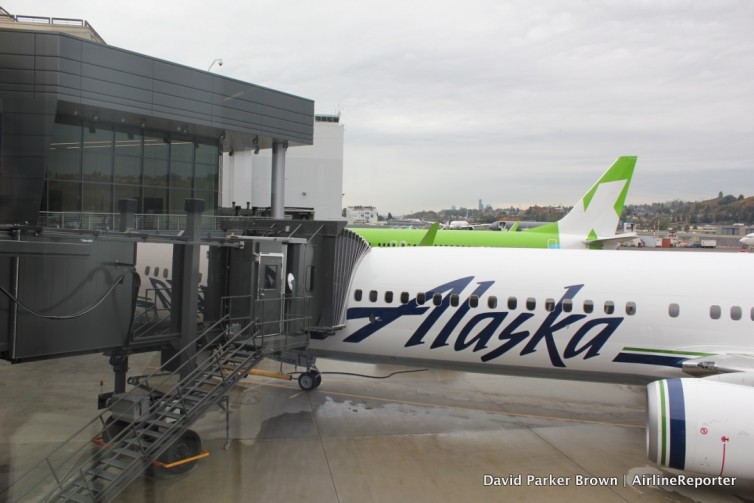
The first plane with the new Space Bins – an Alaska Airlines Boeing 737-900ER (reg: N487AS)
Multiple times during the special media event, held at the 737 Delivery Center at Boeing Field, Alaska stated one of the main reason for the new bins was to reduce anxiety.
Although many of us love flying, there are times where love and frustration can mix. Even when I am boarding with the first half of the passengers, and I know there will be room for my bag, I still worry.
Sometimes I board and quickly realize, “Houston… we have a problem…” there is no room for my bag! I have to gate check it and wait for it again at my destination, something I don’t want to do. And even if there is room, how many of you have been sitting in row 10, but your bag is in row 25? Annoying. These new bins will hopefully put an end to all of that.
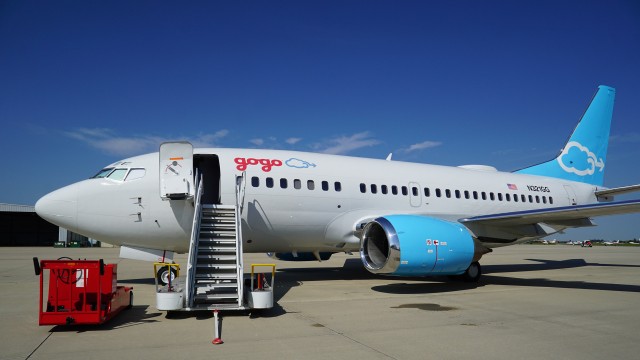
N321GG – Gogo’s 737-500 testbed – Photo: Gogo
Like most business travelers, I have grown accustomed to looking for the familiar WiFi symbol while boarding a plane. Just a few years ago, in-flight connectivity was a luxury and something one could not depend on, whether through spotty deployment across fleets, or because the cutting-edge technology delivering said connectivity wasn’t terribly reliable.
Over the years, however, following increased adoption among carriers, this luxury has morphed into something closer to a necessity. Business travelers like consistency, yet as comedian Louis CK accurately pointed out in one of his more popular skits amongst AvGeeks, we are more entitled than we should be. While I have grown increasingly dependent on connectivity, the underlying technology has always been a bit of a black box to me. You’ll be happy to know the hardware is in-fact encased in black boxes.
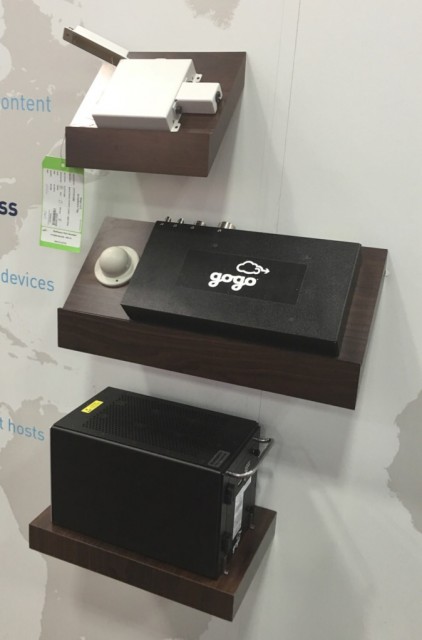
Some of the hardware required to power Gogo’s IFC and IFE systems – Photo: JL Johnson | AirlineReporter
I recently had the opportunity to catch up with the Gogo team at the Airline Passenger Experience Association (APEX) Expo in Portland to learn all about in-flight connectivity. For two days I mingled with PR folks, engineers, and even some of Gogo’s competitors in an attempt to get a solid understanding of IFC basics. Now that I have had a few days to digest the the technology and various initialisms, I’m excited to share what I learned.
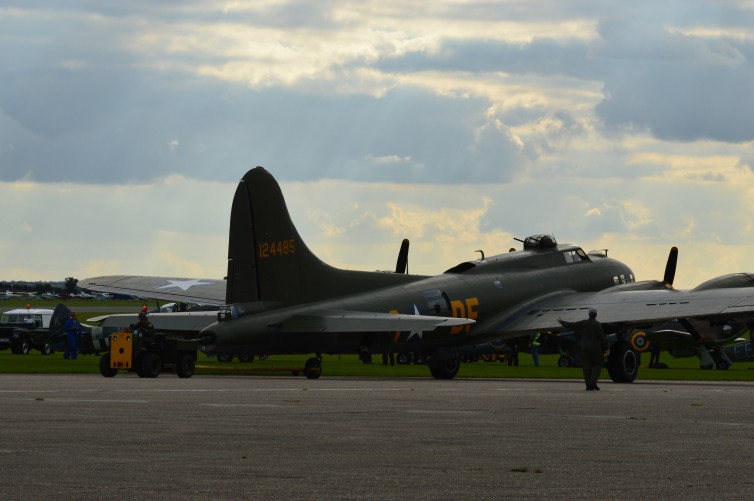
Sally B towed to stand – Photo: Lidia Long
’œUp and at ’˜em, scramble!’: Duxford’s Battle of Britain 75th Anniversary Tribute
’œWould you like to come to Duxford Air Museum with me?’ is the question that the hapless airline pilot, Captain Martin Crieff, asks two women in BBC Radio 4’s brilliant aviation comedy Cabin Pressure. Whilst it’s perhaps not the most conventional place for a date, I applaud the fictional AvGeek for his splendid choice.

The crowds gather in anticipation – Photo: Lidia Long
Originally home to the RAF’s famous No. 12 Group ’œBig Wing’ and Squadron Leader Douglas Bader, Duxford Aerodrome, in Cambridgeshire (UK), is currently a live airfield (IATA code: QFO), a branch of the Imperial War Museum (IWM), and home to a number of modern and classic military and civilian aircraft.








